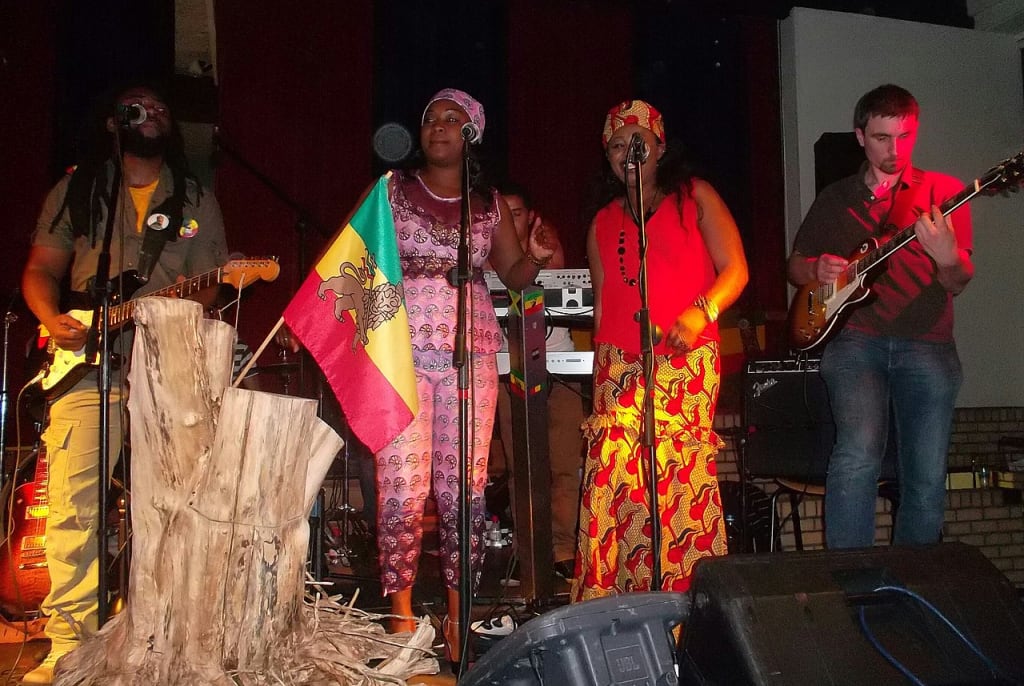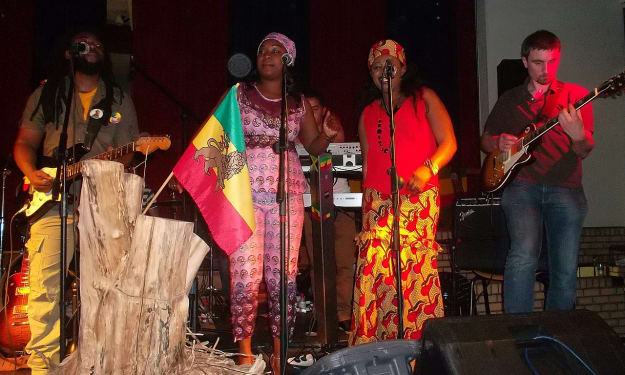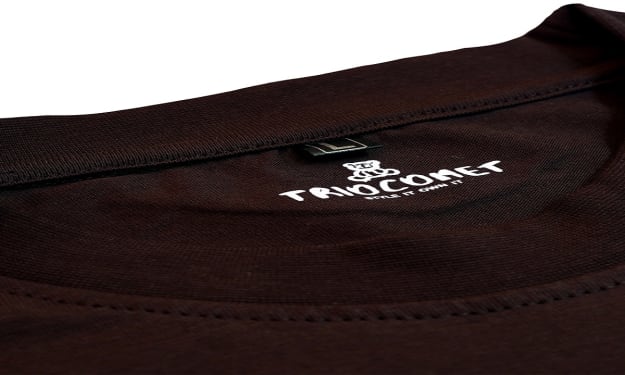Rastafarian Clothing for Women: Embracing Femininity with Style
Empowering Women to Express Themselves Through Authentic Rasta Fashion

Rastafarian culture is a vibrant and fascinating movement that emerged in Jamaica in the early 20th century. It is known for its unique beliefs, music, and fashion, which have influenced people around the world. Clothing plays a significant role in Rastafarianism, as it reflects the movement’s values of individuality, self-expression, and cultural identity. Rastafarian clothing is distinctive and symbolic, incorporating bold colors, natural fabrics, and intricate patterns. Through their clothing, Rastafarians express their connection to Africa, their rejection of Western values, and their commitment to social justice. In this blog post, we will explore the significance of Rastafarian clothing for women, how it can be worn with style and confidence, and why it is important to support sustainable and ethical fashion choices.
Rastafarian Clothing for Women
Rastafarian clothing for women is a celebration of femininity, cultural identity, and individuality. The clothing styles have evolved over time, but they remain true to the movement’s core values of rejecting Western materialism and embracing African culture. Here are some of the key aspects of Rastafarian clothing for women:
Traditional clothing styles for women
Traditional Rastafarian clothing for women includes long, flowing dresses and skirts, often made from lightweight and breathable fabrics. The dresses are typically loose-fitting, with a modest neckline and long sleeves. Some traditional styles also include head wraps or scarves, which are worn as a symbol of African heritage and pride.
Modern interpretations and adaptations of Rastafarian clothing for women
In recent years, there has been a resurgence of interest in Rastafarian fashion, with modern interpretations and adaptations of traditional styles. Some popular modern styles include crop tops, high-waisted pants, and jumpsuits, all with bold prints and vibrant colors.
Key features and elements of Rastafarian clothing for women
Colors: Red, yellow, and green are the signature colors of Rastafarian clothing. These colors represent the Ethiopian flag and symbolize the movement’s connection to Africa, as well as the values of love, peace, and unity.
Fabrics
Natural and breathable materials are favored in Rastafarian clothing, such as cotton, linen, and hemp. These fabrics are not only comfortable to wear, but they also reflect the movement’s commitment to sustainability and respect for the earth.
Patterns
Bold and symbolic prints are a hallmark of Rastafarian clothing. These prints often feature African-inspired motifs, such as lions, elephants, and the continent’s iconic baobab trees. Other patterns, such as the famous “Lion of Judah” symbol, represent the movement’s spiritual and cultural beliefs.
Rastafarian clothing for women is a unique and empowering expression of cultural identity and individuality. Whether wearing traditional styles or modern adaptations, the key features of Rastafarian clothing, such as bold colors, natural fabrics, and symbolic prints, serve as a reminder of the movement’s values and beliefs. By embracing Rastafarian clothing with confidence and pride, women can celebrate their femininity and cultural heritage while promoting sustainability and social justice.
Dressing with Purpose and Meaning
Rastafarian clothing is more than just a fashion statement; it is a form of activism and self-expression. The clothing serves as a visual representation of the movement’s values and beliefs, making it a powerful tool for social and political change. By wearing Rastafarian clothing, women can show their support for the movement’s causes, such as racial equality, environmental sustainability, and social justice.
In addition to its symbolic meaning, Rastafarian clothing is also a reflection of the movement’s commitment to sustainability and ethical fashion choices. Natural, breathable fabrics, such as cotton and hemp, are favored over synthetic materials, which are harmful to the environment. Rastafarians believe in respecting the earth and preserving its resources for future generations, which is why they prioritize sustainable fashion choices.
Another way to support the movement and promote sustainability is by purchasing Rastafarian clothing from Black-owned businesses and artisans. By doing so, women can help support local communities and promote economic empowerment for Black entrepreneurs. It is also a way to ensure that the clothing is made ethically and with fair labor practices.
Embracing Femininity with Style
Rastafarian clothing offers women a unique way to embrace their femininity while expressing their cultural identity. The clothing styles are feminine and elegant, with flowing fabrics and modest cuts that allow women to feel beautiful and comfortable. However, the clothing is also steeped in cultural significance and symbolism, making it an empowering choice for women who want to celebrate their heritage and support social justice causes.
Balancing femininity and cultural identity through clothing
Women who wear Rastafarian clothing are able to balance their femininity and cultural identity in a way that feels authentic and meaningful. The clothing styles are often loose-fitting and comfortable, but also accentuate the curves and natural beauty of a woman’s body. The clothing is also rich in symbolism and meaning, reflecting the movement’s values of African pride, social justice, and spiritual enlightenment.
Rastafarian clothing options for different occasions and settings
Rastafarian clothing for women is not just limited to traditional dresses and skirts; there are many different styles and options available for different occasions and settings. For casual settings, women can choose from comfortable pants, shorts, and tops with bold prints and vibrant colors. For more formal occasions, there are elegant dresses and skirts with intricate details and sophisticated designs. There are also practical options for outdoor activities, such as hiking and camping, with durable fabrics and functional designs.
Accessories and hair styling to complement Rastafarian clothing
Accessories and hair styling are important elements of Rastafarian fashion, as they can complement and enhance the clothing styles. Head wraps or scarves are a popular accessory, and can be worn in many different styles to create a unique look. Jewelry is also an important accessory, with bold pieces featuring African-inspired designs and natural materials. Women can also experiment with different hairstyles, such as dreadlocks or braids, to complete their Rastafarian look.
Breaking Stereotypes and Celebrating Diversity
Rastafarian clothing provides an opportunity for women to challenge beauty standards and embrace their natural beauty. The clothing styles prioritize comfort and function over conformity to traditional beauty standards, allowing women to feel confident and comfortable in their own skin. By breaking stereotypes about what it means to be beautiful, Rastafarian clothing empowers women to embrace their individuality and celebrate their unique features.
Celebrating diversity within Rastafarianism and beyond
Rastafarianism is a movement that celebrates diversity and encourages people to embrace their unique cultural identities. Rastafarian clothes reflects this celebration of diversity through its bold colors, intricate prints, and natural fabrics. Women of all skin tones, body types, and ages can find clothing styles that fit their unique preferences and personalities, allowing them to express themselves in a way that feels authentic and empowering.
Beyond Rastafarianism, wearing Rastafarian clothing can also serve as a statement of solidarity with other marginalized communities. By embracing cultural diversity and celebrating different backgrounds, women can show their support for social justice causes and challenge the status quo.
Empowering women through self-expression and individuality
By breaking stereotypes and celebrating diversity, Rastafarian clothing style empowers women to express themselves and embrace their individuality. The clothing styles are versatile and adaptable, allowing women to create unique outfits that reflect their personal preferences and styles. Whether it’s a bold dress with a symbolic print or a comfortable pair of pants in vibrant colors, Rastafarian clothing offers a way for women to feel confident, beautiful, and empowered.
Conclusion
Rastafarian clothing for women is an empowering and versatile style that reflects the rich cultural heritage of Rastafarianism. The clothing styles prioritize comfort, individuality, and self-expression, while also promoting sustainability and ethical fashion choices.
Throughout this article, we have explored the traditional and modern interpretations of Rastafarian women’s clothing, highlighting key features such as bold prints, vibrant colors, and natural fabrics. We have also discussed the importance of self-expression, breaking stereotypes, and celebrating diversity within Rastafarianism and beyond.
We encourage women to embrace Rastafarian clothing and culture with confidence and pride. By supporting Black-owned rasta clothing stores and making sustainable fashion choices, we can also promote social and environmental justice causes. Let us embrace the beauty of Rastafarian clothing and celebrate the power of self-expression and individuality.
(Main Picture Credit: Happiness Stephen)
About the Creator
Enjoyed the story? Support the Creator.
Subscribe for free to receive all their stories in your feed. You could also pledge your support or give them a one-off tip, letting them know you appreciate their work.






Comments
There are no comments for this story
Be the first to respond and start the conversation.